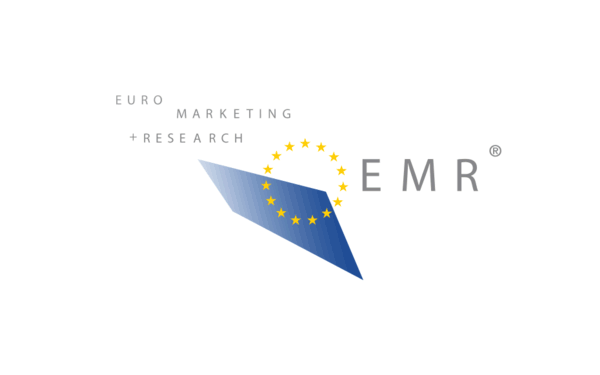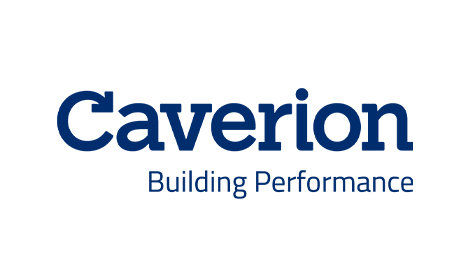Assemblin Caverion Group – Caverion strengthens its position as key partner in major infrastructure investments in Europe – secures a large contract related to the expansion of a state-of-the-art data centre in Finland
Caverion has signed a comprehensive agreement with Nebius DC Oy, a Finnish subsidiary of leading AI infrastructure provider Nebius, covering total technical solutions, such as cooling, heat recovery, ventilation, and fire safety at Nebius’s data centre located in Mäntsälä, Finland.
The estimated total value of the agreement is approximately 80 million euros.
The Mäntsälä data centre is a flagship site for Nebius, an Amsterdam-headquartered technology company that builds infrastructure for the global AI industry. The expansion project includes the extension of the existing building and the construction of two new data centre buildings. Once complete, the Mäntsälä data centre will have total capacity of 75 MW.
The contract with Caverion includes delivery of liquid cooling (to complement existing air cooling systems), heat recovery, ventilation, fire alarm, fire extinguishing and smoke extraction systems as well as electrical and HVAC installations in the existing data centre building and in the two new ones. The project started in April 2025 and is planned to be completed early 2026.
The data centre at Mäntsälä deploys a variety of technological solutions aimed at reducing environmental impact. The data centre utilises free cooling and incorporates a heat recovery system to direct waste heat to the district heating network. This system currently recovers approximately 20,000 MWh of energy annually, heating the equivalent of 2,500 Finnish homes. As the data centre expands, the volumes of recovered heating are expected to increase, helping reduce the district’s heating-associated emissions.
“At Caverion, we are committed to similar high sustainability principles as those adopted by Nebius. This assignment is very important to us and speaks for Caverion’s expertise in managing large-scale contracts and delivering high-quality technical solutions. We are proud to support Nebius in building highly performant, energy-efficient AI infrastructure in Finland”, says Ville Tamminen, CEO of Caverion Finland, EVP.
“Data centres and critical infrastructure are an important part of Assemblin Caverion Group’s strategy. Our position in the market is strong and we are pleased to support global infrastructure customers such as Nebius with our specialised capabilities and broad service delivery”, adds Jacob Götzsche, Executive Chairman of the Board, Assemblin Caverion Group.
“The expansion of the Mäntsälä site is a strategically important part of our global AI infrastructure build-out, and will enable us to better serve growing demand from AI builders globally. We are pleased to count on Caverion’s expertise and multi-technical competence in ensuring timely, high-quality delivery”, says Andrey Korolenko, Chief Product and Infrastructure Officer at Nebius.
Read more about Caverion’s services for data centres
SourceAssemblin Caverion Group
EMR Analysis
More information on Assemblin Caverion Group: See the full profile on EMR Executive Services
More information on Jacob Götzsche (Executive Chairman, Assemblin Caverion Group + Member of the Executive Committee (EC) and Member of the Executive Management Team (EMT), Executive Chairman, Assemblin Caverion Group + President and Chief Executive Officer, Caverion Corporation): See the full profile on EMR Executive Services
More information on Mats Johansson (Member of the Executive Committee (EC) and Member of the Executive Management Team (EMT), Group President and Chief Executive Officer, Assemblin Caverion Group): See the full profile on EMR Executive
More information on Ville Tamminen (Member of the Executive Committee (EC) and Member of the Executive Management Team (EMT), Executive Vice President, Chief Executive Officer, Caverion Finland, Assemblin Caverion Group): See the full profile on EMR Executive Services
More information on Nebius: https://nebius.com/ + Building infrastructure for the AI revolution
Nebius (NASDAQ:NBIS) is a technology company building full-stack infrastructure to service the rapid growth of the global AI industry, including large-scale GPU clusters, cloud platforms, and tools and services for developers. Headquartered in Amsterdam and listed on Nasdaq, the company has a global footprint with R&D hubs across Europe, North America, and Israel.
Nebius’s core business is an AI-centric cloud platform built for intensive AI workloads. With proprietary cloud software architecture and hardware designed in-house (including servers, racks, and data center design), Nebius gives AI builders the compute, storage, managed services, and tools they need to build, tune, and run their models.
A preferred cloud service provider in the NVIDIA Partner Network, Nebius offers high-end infrastructure optimized for AI training and inference. The company boasts a team of over 500 skilled engineers, delivering a true hyperscale cloud experience tailored for AI builders.
The group also operates three additional businesses under their own distinctive brands: Avride – one of the world’s most experienced self-driving teams focusing on driverless cars and delivery robots; Toloka – a data partner for all stages of AI development from training to evaluation; and TripleTen – a leading edtech platform specialising in reskilling individuals for successful careers in tech.
For the full year 2024, the Group’s revenue of $117.5 million increased 462% year-over-year.
More information on Arkady Volozh (Founder and Chief Executive Officer, Nebius): https://group.nebius.com/governance/board-of-directors + https://www.linkedin.com/in/arkady-volozh/
More information on Andrey Korolenko (Chief Product and Infrastructure Officer, Nebius): https://group.nebius.com/governance/board-of-directors + https://www.linkedin.com/in/andreykorolenko/
EMR Additional Notes:
- AI – Artificial Intelligence:
- Artificial intelligence is the simulation of human intelligence processes by machines, especially computer systems.
- As the hype around AI has accelerated, vendors have been scrambling to promote how their products and services use AI. Often what they refer to as AI is simply one component of AI, such as machine learning. AI requires a foundation of specialized hardware and software for writing and training machine learning algorithms. No one programming language is synonymous with AI, but well a few, including Python, R and Java, are popular.
- In general, AI systems work by ingesting large amounts of labeled training data, analyzing the data for correlations and patterns, and using these patterns to make predictions about future states. In this way, a chatbot that is fed examples of text chats can learn to produce lifelike exchanges with people, or an image recognition tool can learn to identify and describe objects in images by reviewing millions of examples.
- AI programming focuses on three cognitive skills: learning, reasoning and self-correction.
- What are the 4 types of artificial intelligence?
- Type 1: Reactive machines. These AI systems have no memory and are task specific. An example is Deep Blue, the IBM chess program that beat Garry Kasparov in the 1990s. Deep Blue can identify pieces on the chessboard and make predictions, but because it has no memory, it cannot use past experiences to inform future ones.
- Type 2: Limited memory. These AI systems have memory, so they can use past experiences to inform future decisions. Some of the decision-making functions in self-driving cars are designed this way.
- Type 3: Theory of mind. Theory of mind is a psychology term. When applied to AI, it means that the system would have the social intelligence to understand emotions. This type of AI will be able to infer human intentions and predict behavior, a necessary skill for AI systems to become integral members of human teams.
- Type 4: Self-awareness. In this category, AI systems have a sense of self, which gives them consciousness. Machines with self-awareness understand their own current state. This type of AI does not yet exist.
- Machine Learning (ML):
- Developed to mimic human intelligence, it lets the machines learn independently by ingesting vast amounts of data, statistics formulas and detecting patterns.
- ML allows software applications to become more accurate at predicting outcomes without being explicitly programmed to do so.
- ML algorithms use historical data as input to predict new output values.
- Recommendation engines are a common use case for ML. Other uses include fraud detection, spam filtering, business process automation (BPA) and predictive maintenance.
- Classical ML is often categorized by how an algorithm learns to become more accurate in its predictions. There are four basic approaches: supervised learning, unsupervised learning, semi-supervised learning and reinforcement learning.
- Deep Learning (DL):
- Subset of machine learning, Deep Learning enabled much smarter results than were originally possible with ML. Face recognition is a good example.
- DL makes use of layers of information processing, each gradually learning more and more complex representations of data. The early layers may learn about colors, the next ones about shapes, the following about combinations of those shapes, and finally actual objects. DL demonstrated a breakthrough in object recognition.
- DL is currently the most sophisticated AI architecture we have developed.
- Computer Vision (CV):
- Computer vision is a field of artificial intelligence that enables computers and systems to derive meaningful information from digital images, videos and other visual inputs — and take actions or make recommendations based on that information.
- The most well-known case of this today is Google’s Translate, which can take an image of anything — from menus to signboards — and convert it into text that the program then translates into the user’s native language.
- Machine Vision (MV):
- Machine Vision is the ability of a computer to see; it employs one or more video cameras, analog-to-digital conversion and digital signal processing. The resulting data goes to a computer or robot controller. Machine Vision is similar in complexity to Voice Recognition.
- MV uses the latest AI technologies to give industrial equipment the ability to see and analyze tasks in smart manufacturing, quality control, and worker safety.
- Computer Vision systems can gain valuable information from images, videos, and other visuals, whereas Machine Vision systems rely on the image captured by the system’s camera. Another difference is that Computer Vision systems are commonly used to extract and use as much data as possible about an object.
- Generative AI (GenAI):
- Generative AI technology generates outputs based on some kind of input – often a prompt supplied by a person. Some GenAI tools work in one medium, such as turning text inputs into text outputs, for example. With the public release of ChatGPT in late November 2022, the world at large was introduced to an AI app capable of creating text that sounded more authentic and less artificial than any previous generation of computer-crafted text.
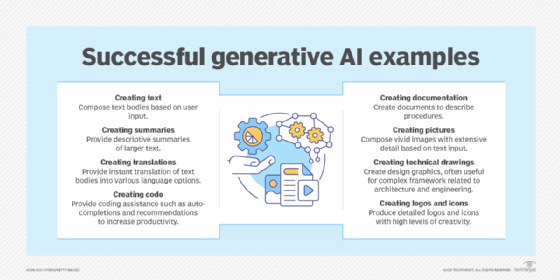
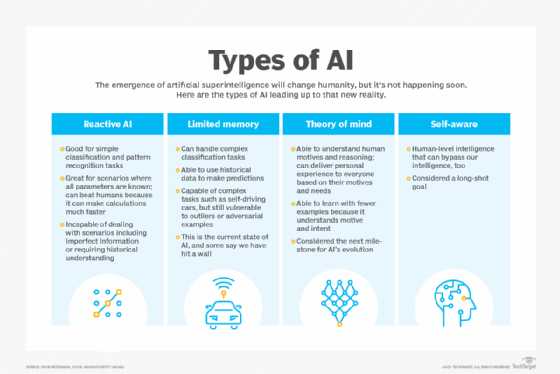

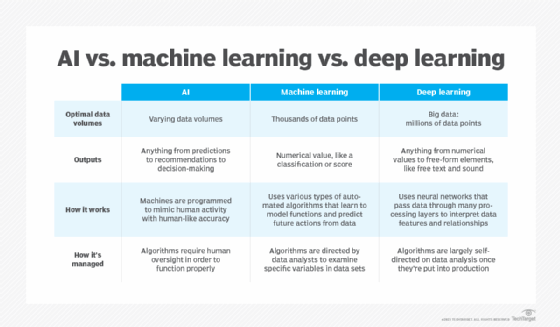
- Edge AI Technology:
- Edge artificial intelligence refers to the deployment of AI algorithms and AI models directly on local edge devices such as sensors or Internet of Things (IoT) devices, which enables real-time data processing and analysis without constant reliance on cloud infrastructure.
- Simply stated, edge AI, or “AI on the edge“, refers to the combination of edge computing and artificial intelligence to execute machine learning tasks directly on interconnected edge devices. Edge computing allows for data to be stored close to the device location, and AI algorithms enable the data to be processed right on the network edge, with or without an internet connection. This facilitates the processing of data within milliseconds, providing real-time feedback.
- Self-driving cars, wearable devices, security cameras, and smart home appliances are among the technologies that leverage edge AI capabilities to promptly deliver users with real-time information when it is most essential.
- Multimodal Intelligence and Agents:
- Subset of artificial intelligence that integrates information from various modalities, such as text, images, audio, and video, to build more accurate and comprehensive AI models.
- Multimodal capabilities allows to interact with users in a more natural and intuitive way. It can see, hear and speak, which means that users can provide input and receive responses in a variety of ways.
- An AI agent is a computational entity designed to act independently. It performs specific tasks autonomously by making decisions based on its environment, inputs, and a predefined goal. What separates an AI agent from an AI model is the ability to act. There are many different kinds of agents such as reactive agents and proactive agents. Agents can also act in fixed and dynamic environments. Additionally, more sophisticated applications of agents involve utilizing agents to handle data in various formats, known as multimodal agents and deploying multiple agents to tackle complex problems.
- Small Language Models (SLM) and Large Language Models (LLM):
- Small language models (SLMs) are artificial intelligence (AI) models capable of processing, understanding and generating natural language content. As their name implies, SLMs are smaller in scale and scope than large language models (LLMs).
- LLM means large language model—a type of machine learning/deep learning model that can perform a variety of natural language processing (NLP) and analysis tasks, including translating, classifying, and generating text; answering questions in a conversational manner; and identifying data patterns.
- For example, virtual assistants like Siri, Alexa, or Google Assistant use LLMs to process natural language queries and provide useful information or execute tasks such as setting reminders or controlling smart home devices.
- Agentic AI:
- Agentic AI is an artificial intelligence system that can accomplish a specific goal with limited supervision. It consists of AI agents—machine learning models that mimic human decision-making to solve problems in real time. In a multiagent system, each agent performs a specific subtask required to reach the goal and their efforts are coordinated through AI orchestration.
- Unlike traditional AI models, which operate within predefined constraints and require human intervention, agentic AI exhibits autonomy, goal-driven behavior and adaptability. The term “agentic” refers to these models’ agency, or, their capacity to act independently and purposefully.
- Agentic AI builds on generative AI (gen AI) techniques by using large language models (LLMs) to function in dynamic environments. While generative models focus on creating content based on learned patterns, agentic AI extends this capability by applying generative outputs toward specific goals.
- Kilowatt (kW):
- A kilowatt is simply a measure of how much power an electric appliance consumes—it’s 1,000 watts to be exact. You can quickly convert watts (W) to kilowatts (kW) by diving your wattage by 1,000: 1,000W 1,000 = 1 kW.
- Megawatt (MW):
- One megawatt equals one million watts or 1,000 kilowatts, roughly enough electricity for the instantaneous demand of 750 homes at once.
- Gigawatt (GW):
- A gigawatt (GW) is a unit of power, and it is equal to one billion watts.
- According to the Department of Energy, generating one GW of power takes over three million solar panels or 310 utility-scale wind turbines
- Terawatt (TW):
- One terawatt is equal to 1,000,000,000,000 watts.
- The main use of terawatts is found in the electric power industry.
- According to the United States Energy Information Administration, America is one of the largest electricity consumers in the world using about 4,146.2 terawatt-hours.
- HVAC-R (Heating, Ventilation, and Air Conditioning – Refrigeration):
- Heating, ventilation, and air conditioning is the use of various technologies to control the temperature, humidity, and purity of the air in an enclosed space. Its goal is to provide thermal comfort and acceptable indoor air quality.
- HVACR involves maintaining, repairing and installing heating, ventilation, air conditioning, and refrigeration systems.
